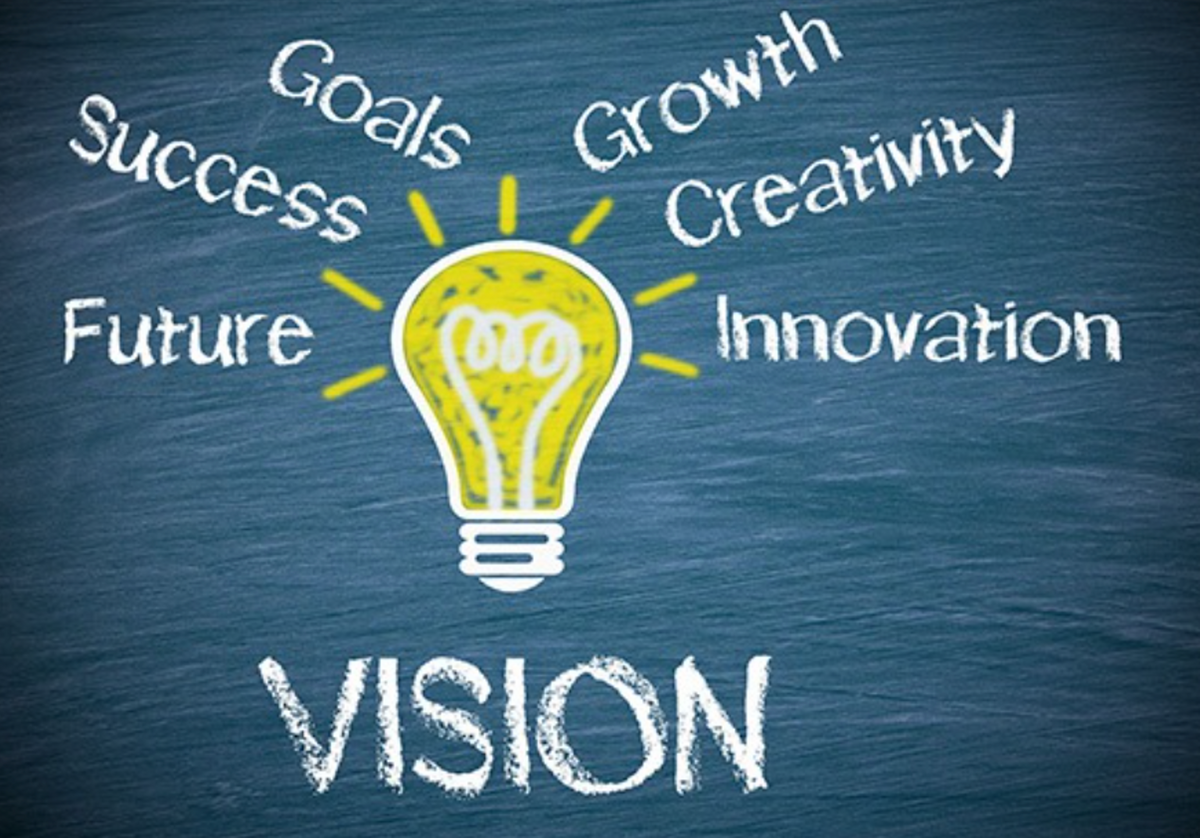Because if your project’s vision for success isn’t powerful enough, it will be dead in the water.
Another insight into successful citizen activism by veteran change-maker John Graham (Coach’s Corner #6)
OK, there’s a public problem that’s really bugging you and you’re ready to put some real energy, time and resources into helping fix it. Maybe it’s the climate crisis or the curricula in your kid’s school or getting your candidate into office. Or something else.
So you swing into action!
Whoa! Not so fast.
If I’ve learned anything in four decades of coaching political activists, it’s that launching a project without a clear vision of its success is a prescription for failure. It’s like stepping on the gas without putting your hands on the wheel.
By “vision” I’m not talking about some idle wish or hope—but a clear, strong, detailed picture of a result that doesn’t yet exist. I’m talking about seeing the real fruits of the real efforts you’re about to launch, a vision that comes from the future and informs and energizes the present.
Visioning is the most powerful tool I’ve ever found for turning a good idea into a reality.
Think about Dr. Martin Luther King, Jr. When he said, “I have a dream…” there was very little national support for his cause and Congress showed no signs of passing civil rights legislation. But his vision catalyzed progress—in attitudes, strategy and legislation—where there had been none.
Not every picture in your head is a “vision.” There are some pretty firm requirements for creating a vision compelling enough to affect change, especially on issues where resistance is firm and obstacles are many.
First, you gotta do your homework. Start by reviewing everything you know about the problem, gathering the data you’re lacking, and getting views from as many people as you can, including people who oppose what you want to do.
When you’ve got a decent handle on how big and complex the challenge is, pick a date in the future when—if the work started right now—your project could be completed. Make that date early enough to be challenging—but not impossible. A project to get your school board chair re-elected, for example, could take two months. I’d guess that a project to end political gerrymandering in your state could bear fruit in two years, while getting your city to switch to an all-electric bus fleet might take five.
Next, suspend your skepticism and put yourself into the future at that end date and at a place where the results of your project are most evident. Close your eyes if that helps. If your vision is an end to the pandemic, then take yourself into the future to the specific date of the last Covid death in your state, perhaps standing in an ER where there are no Covid cases, with a crew of medics looking tired but happy.
Now—still standing at that end date—spend what you might think is an absurd amount of time sketching the details of exactly how things look when your project has succeeded. Start with any new or different buildings, equipment, or events and focus all the way down to the color of people’s socks.
What sounds and smells are there? Are kids laughing? Are there hot dogs cooking? Let the images flood in. If there’s media coverage, include those words and images too.
What can you tell about people’s feelings, now that the project is done? Have their attitudes changed? What are they saying? What does their body language tell you? How do you feel about this success? Keep coming up with more and more detailed pictures, always keeping yourself in the future, experiencing a new reality and looking back on what it took to get there.
Caution, this is not easy, especially for people like me, who live by logic, not emotions! But you lose nothing by giving it a try.
Let’s say your vision is of the day when the last homeless vet in your town has a roof over his head and you’ve been invited to the housewarming. The vet keeps thanking you for your efforts and insists on taking you on a tour. He points out everything from the shape of the showerheads to the patterns in the living room carpet. The mayor is there, telling a local news reporter how proud he is of what the city has done and... and...
When your vision seems sharp and compelling, find a trusted friend or friends and describe your vision to them. Stay in the future as you talk, using only the past or present tense. It’s not “We’ll get the mayor’s approval” but “We got the mayor’s approval.”
How does your friend react? Does she see what you see? Does she share your enthusiasm? Does she ask questions that reveal unclear or confusing parts of your vision that you can revisit and improve? Keep working at it.
Be patient. Still from the perspective of being in the future and looking back, ask yourself this question: before your project started—what were the three biggest obstacles you faced—obstacles that once stood between you and the success you've now achieved? At least one of these obstacles (maybe all three!) must be some negative or unhelpful attitude on the part of someone not initially happy with what you want to do or how you want to do it. For example if your project is to expand low-income housing in your community, the obstacles might include zoning laws that now prohibit such housing, lack of economic incentives to build new units, and the attitudes of existing homeowners now shouting “Not in my backyard!”
Still looking back from the future, “remember” how you overcame those obstacles. The project did succeed, so obviously you did overcome them. How did that happen?
Using everything you’ve learned so far and, without censoring your thoughts, let the pictures flow. Write them down, then bounce them off that trusted friend. Again you would be speaking from the future so the only rule is not to use the future tense with that friend, only the past or present, as in, “We got the money we needed by convincing community business-owners to support the project.”
Rinse and repeat. Keep refining your obstacle-solving ideas by dropping unworkable options and looking for more creative ones that might actually work. For example, mailers explaining your low-income housing project to skeptical neighbors may not be persuasive, but door-to-door visits and community meetings might. I guarantee that you’ll be surprised at how many good problem-solving ideas appear from what might seem to be a messy process.
Why does this back-from-the-future process work as well as it does? Well, I’m no psychologist, but my experience is that looking from the future backward to “see” solutions you’ve already implemented relaxes your brain, giving you a confident creativity that’s far more difficult to attain when you’re looking into the teeth of obstacles you’ve yet to confront.
When you move on to actually plan and carry out your project, the solutions and ideas generated by this part of the exercise will prove remarkably helpful.
Now write it all down—your vision with all its details, the obstacles and your options for solving them—all of it. This is will provide the structure for the action plan you now need to create—the one with all the goals, objectives, budgets, assignments and deadlines you’re probably used to seeing.
Starting with a clear vision will make that work a whole lot easier and more effective. Creating a compelling vision will take you hours or even days. But it will be worth it. You’ll see.
Finally, come up with an energizing, positive name for your project---something that represents the vision, conveys energy and commitment, and appeals to all the people who will hear about it, especially those whose support you need.
Next: #7—Trust Them? Are you Kidding?
John Graham is author of Stick Your Neck Out—a Street-smart Guide to Creating Change in Your Community and Beyond
Photo credit: www.mycomputercareer.edu/

